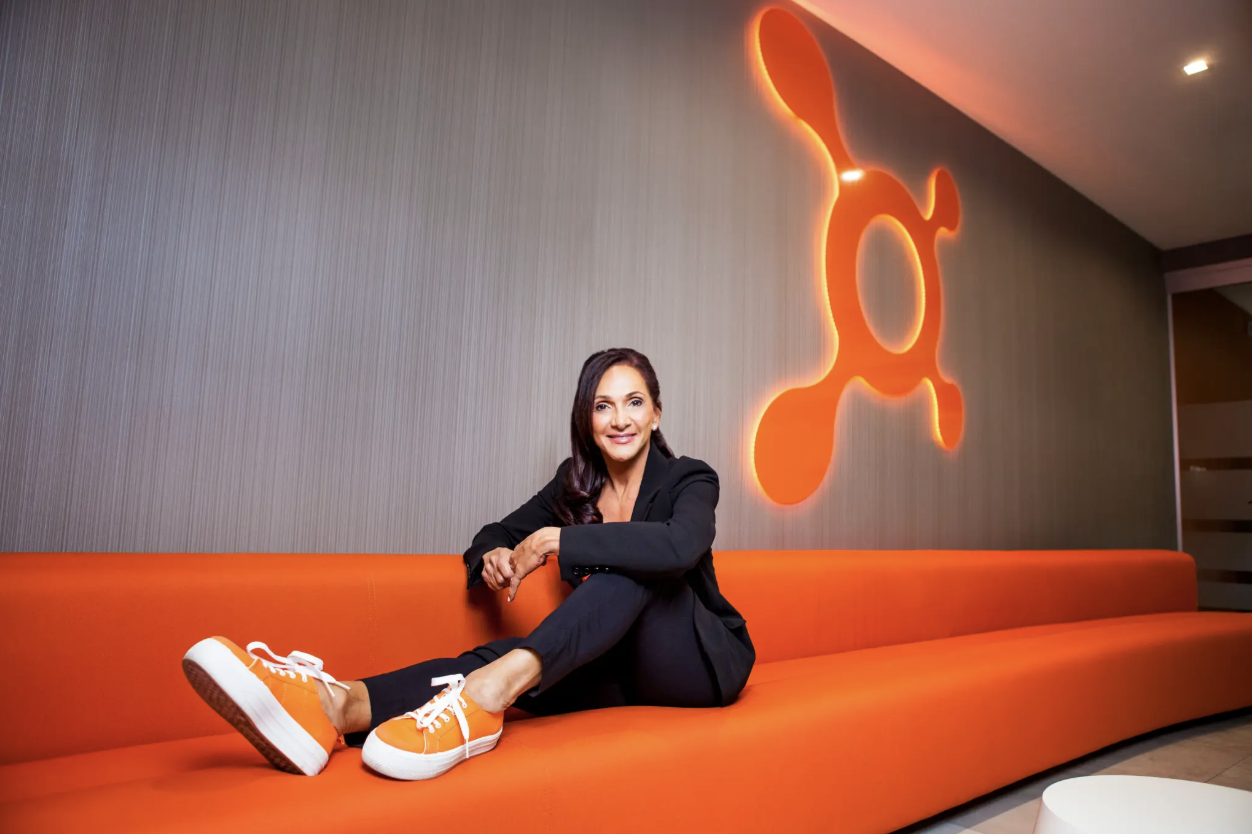"It’s not just about how it looks, it’s about being able to do it and how it feels when I do it," says Ellen, the founder of the Orangetheory gym chain.
Orangetheory is one of the most successful gym franchises in the US. As of 2024, they had over 1,500 studios in 25 countries, with the majority located in the US.
Here are Ellen's secrets to a fit physique in her late 60s:
Start early, but don't be too strict
"Fitness has always been a part of my life. I was fortunate enough to grow up in a household where movement was the norm—my dad was a PE teacher and a football coach, so physical activity and discipline were the rhythm of every day," she says.
She has competed in countless mini-triathlons and 10k races. However, like most people, "life has its ups and downs. Between career changes, motherhood and personal challenges, there were times I had to reset my goals and recommit to my fitness," Ellen shares.
As she got older, her focus shifted. "From my 40s onward, my approach became more about longevity. I focused on what would truly benefit me and my body in the decades to come."
Eat with intention, but don't deprive yourself
"For me, diet is about a balance geared toward longevity. I focus on fueling my body in a way that supports stamina, strength and healthy aging," she says.
That means eating plenty of whole foods, organic produce, wild-caught fish and grass-fed meat. "Protein is the foundation—I try to eat my body weight in grams of protein every day to support muscle maintenance and recovery, especially as I get older," she says.
But that doesn't mean there's no room for indulgences. She enjoys high-calorie Italian favorites like pasta and pizza.
Train smart
Ellen is certainly not a weekend warrior. "My weekly schedule is a combination of structure, balance and consistency. I work out 6 days a week and each day has a specific purpose."
She follows the Orangetheory Fitness workout—a combination of strength training and interval cardio—3 days a week and dedicates one day to heavy lifting. This is especially crucial for older adults, as the rate of muscle loss accelerates with age.
She also does a lot of walking, which research shows can significantly reduce the risk of death from all causes. "One day a week, I do a rucking workout—about 45 minutes with a 9 kg weighted vest," she says.
Ellen dedicates one day to zone 2 walking, which means walking at a pace that keeps her heart rate in zone 2 of her maximum heart rate range, typically 60-70% of maximum heart rate. This is known as the aerobic zone, where the body efficiently burns fat for fuel and improves endurance without putting excessive stress on the heart or lungs.
Finally, she incorporates an hour-long stretching session to support long-term flexibility and mobility whenever possible.
 |
At 68, Ellen Latham maintains a body fat percentage of around 15% and toned muscles. Photo: Orangetheory Fitness |
At 68, Ellen Latham maintains a body fat percentage of around 15% and toned muscles. Photo: Orangetheory Fitness
Be persistent
"Consistency is the biggest 'secret,' if you want to call it that. You don’t have to go hard every day—but you need a routine you can stick with. Just 3 focused workouts a week, combined with daily movement, can make an incredible difference," Ellen says.
However, she also recognizes that physically, things start to decline after 45 and only get worse from there, especially if you haven’t been working out beforehand. "50 can be a tough transition, and 60 often brings much more serious decline if you’re not consistently doing both cardio and strength training. That’s why consistency is everything."
Ellen's golden duo is interval cardio and strength training. "Combined, they bring not just more years to your life, but more life to your years."
Take advantage of all available amenities
No workout schedule is complete without recovery, which is why Ellen regularly uses infrared saunas, red light beds and cold plunges. "These modalities support recovery, reduce inflammation and help me maintain high energy."
She also prioritizes rest, an important but easily forgotten factor. "Don’t discount stress and sleep; your nervous system plays a huge role in your well-being. I always tell people: Find your 'why.' For me, it’s to live strong and clear-headed for the life I love."
Finally, she's not afraid to use some of the tools women have today to get through hormonal changes more easily. "I’m also a huge believer in hormone replacement therapy during perimenopause and menopause. It’s helped me maintain muscle and bone strength, which gets harder as we age—especially for women."
Measure progress by strength, not size
At almost 70, Ellen doesn't worry about the number on the scale or her clothing size. "Another key shift is how I define progress. After 50, it’s not about weight or how I look, but about strength, energy, balance and the ability to be self-sufficient."
That's why she focuses on functional fitness, like Farmer's walks—walking with weights in each hand to test full-body strength and grip endurance—and box jumps for 5 to 10 minutes each week to support bone density.
Make working out fun
Finding a good community of people who support, encourage and cheer you on can make all the difference. Plus, it allows you to reap some of the neuroprotective benefits from social interaction while increasing longevity, Ellen recommends.
Most importantly—if you’re going to skimp on something, don’t let it be something as important as your health and well-being.
"You are worth the time and money invested in yourself! This is about your health, energy and ability to live the life you want," Ellen says.
Hoang Dung (NY Post)












